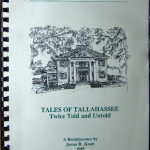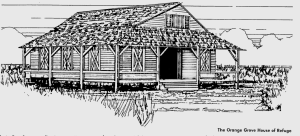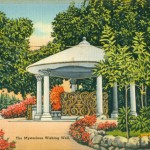
“What’s your earliest Boynton Beach memory?” If one asked that question on the street, the beach, at the mall or even on Facebook, it’s likely there’d be dozens, if not hundreds or thousands of different early memories, visions (or versions) of Boynton. That’s because we all have our personal memories, our familial stories. We may have been born in different eras, grew up in a different neighborhood, or hung out at different places.
There’s probably some commonalities, like food. People tend to fondly remember food. It wouldn’t be an oversimplification to say that Bud’s Chicken, Lucy’s Donuts, Lucille and Otley’s Restaurant and Sal’s (or Danny’s) Pizza comes up. Who the heck is Danny, anyway? Oh, he’s a new kid on the block, like many of you (Welcome to the neighborhood).
Other common threads are the beach, A1A and the Boynton Inlet. Just don’t call it by it’s official name (The South Lake Worth Inlet). That would irritate generations of people who are certain the name is the Boynton Inlet—and that would be especially confusing because there’s a town nearby named Lake Worth. Or is that Lake Worth Beach? Depends upon who you ask, and when they moved here.
And the Boynton Beach Mall. Again, everyone has their version. Back when there was NOTHING to do in little old quiet Boynton, the mall was a HUGE deal. Jordan Marsh, Burdines, food, games, hanging out in something called air-conditioning…ahh. Then there’s haters…haters gonna hate—and supporters. Like mall walkers. They love the mall. And dad, Sears is one of his favorite stores. Oh dear, Sears is gone. Lots of people will say that Sears, ToysRUs, and K-Mart or whatever store is lame—until it’s gone. Then they miss it and post all kinds of photographs wishing that it was still there, and that they could buy some Craftsman tools.

A view of the original bridge over the inlet, sometimes called Rainbow Bridge or Old McDonald Bridge for its twin arches
That reminds me of the Two Georges. No, not the restaurant, the boat. Back in the 1960s (AKA The old days), Boynton was a farming and fishing town. Really, it was. Once the Inlet (the cut to old-timers) opened up, commercial and sport fishermen and even weekend warriors could ride out through the Inlet to perhaps the best fishing spots in the country. That was before wave runners, jet-skis and selfies. The Two Georges was just one of the ½ dozen head boats and several dozen charter boats docked at Boynton marinas. A head boat is a boat where folks pay a few bucks a head (a person) to fish for four hours. They are sometimes called drift boats, because once the captain gets near a favorite fishing spot, or at least the water is a certain depth, he cuts the engine for a time and lets the boat…drift. I won’t tell you what happened to the Two Georges boat (I’ll let the old-timers here chime in), but I can tell you that the Two Georges Restaurant is still here, and so is the Banana Boat. But someone is thinking of the restaurant that was there before the Banana Boat. It begins with an S…..it was owned by the Molle’s…Smokey’s! That’s it, Smokey’s Wharf!
What about the farms? It wouldn’t be a stretch to say that back in the 1970s pretty much everything west of Congress was farmland. West of Military was “the boonies.” That brings us back to the question? What is your version of Boynton? For some it was the blue crabs that flooded the coastal highway, causing tire punctures. For others it was taking horseback riding lessons at one of Boynton’s many stables. Others recall fishing off N. 22nd Avenue (what’s that you say?)…I mean Gateway Blvd. There was a Go-Kart and midget car race track on Lawrence Road…and a citrus farm where you could drink fresh squeezed orange juice, ride a tram through the groves, eat pie, see a native Seminole wrestle an alligator. Certainly you remember Knollwood Groves? What about Palm Beach Groves, Sturrock Groves, Indian Hill Groves, Blood’s Hammock Groves? Why did you think there is a school on Lawrence Road called Citrus Cove? Have you any idea where the Rangeline is? State Road 441 (AKA the Everglades). Don’t get me started on the dairies. Or the roses and the orchids. Or the pineapples. Or the toms. Tom who? Tom-a-to.
Times change.
Nothing stays the same. People are born. We live, we love, we die. Storms come,
storms go, we rebuild, preserve what we can, and honor and memorialize what is
gone. Embrace what you’ve got. As Joni Mitchell sang “ … you don’t know what you’ve got
till it’s gone … “




















